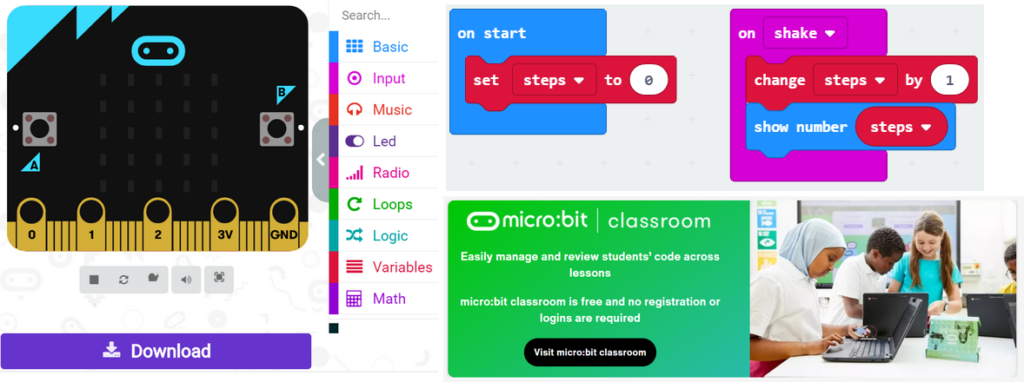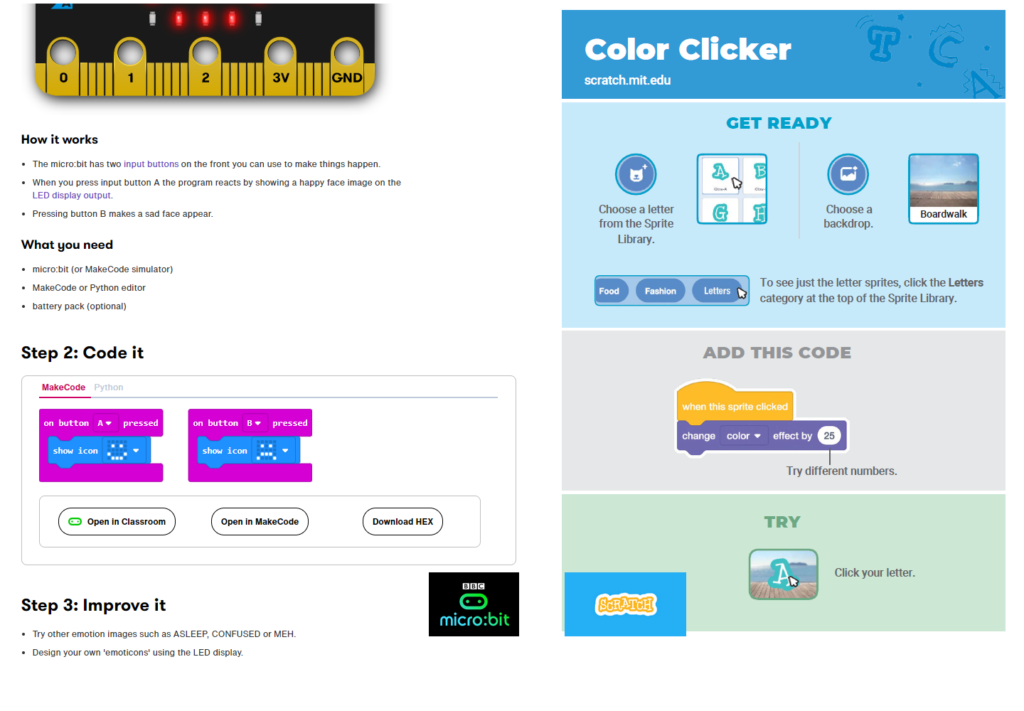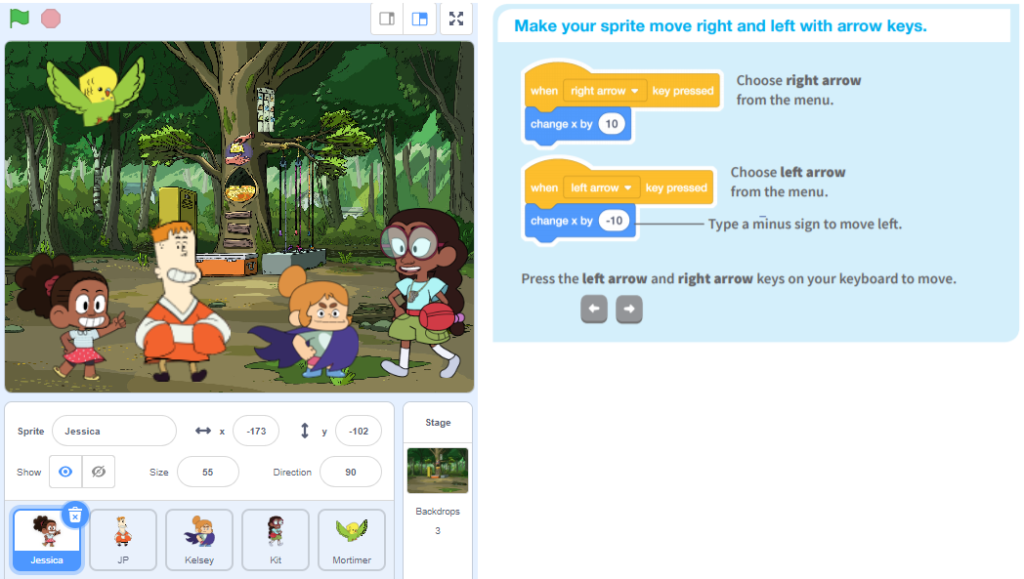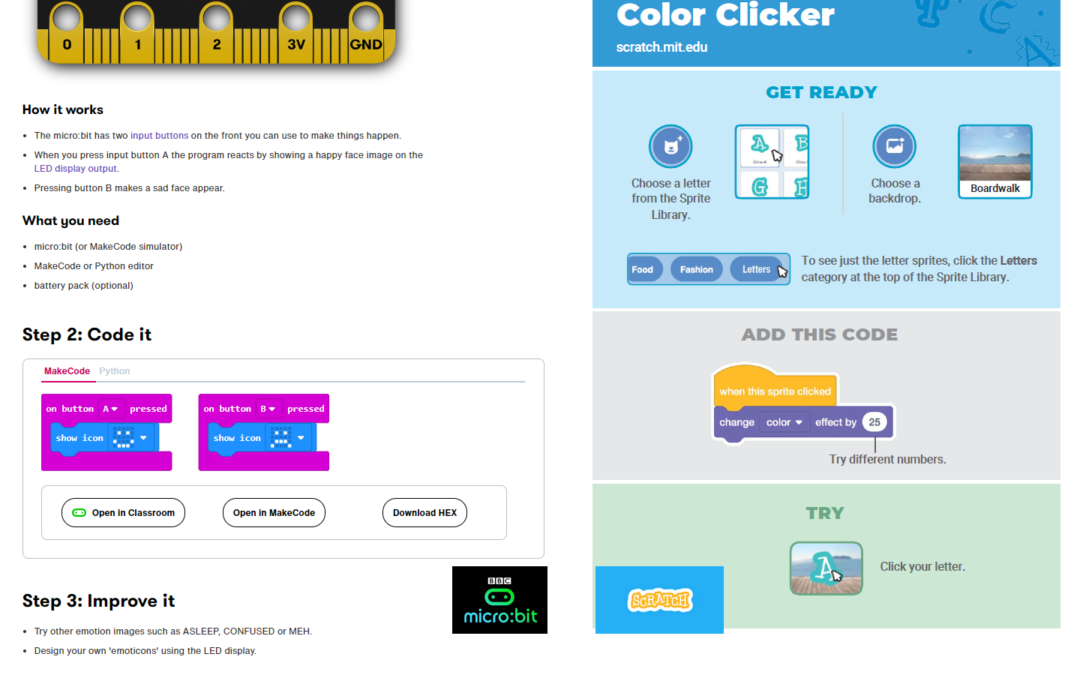Much as with Sheldon’s “Fun with Flags” or rather hopefully more funny yet, I’m glad to kick off this beginner course in physical computing for children in primary school.
This is a first time for me and hopefully not the last, the “trials” with my children have produced positive results so far, let’s keep ?
This Beginner course in Physical Computing will guide children through the basic concepts of software programming using visual environments which are both powerful and fun at the same time.

The BBC microbit Microsoft MakeCode editor is a Visual environment which includes a virtual electronic board
It’s time to move beyond the good old “Office” suite and get children into coding which in my opinion is what ICT in schools should be about.
With the number of Internet of Things (IoT) devices reaching 31 billion in 2020 the IoT is one of the fastest growing sectors in ICT. The demand for software developers is increasing every year and programming is more and more a requirement no matter which job one will choose.
The course
We will be moving across two platforms: BBC micro:bit and Scratch from MIT

Each session will provide material readily available from the platforms websites in the form of either a link to a web-page or a PDF. In either cases I will send an email upfront. This should allow for a smoother start of each session and provide a written reference to run through the exercise again or terminate unfinished work after class.
Although the course will not specifically require a physical BBC microbit board it would render things a lot more interesting having one. A Physical Computing course should actually allow for something to happen in the “real world”. The cost of the board and some accessories is within the €40 range so it will hopefully be affordable by most.
The class will run over Zoom using the platform specific online classrooms i.e. BBC microbit or Scratch classrooms.
Age target
The course is intended for students currently in P3, P4, P5 (Year 4,5,6 in UK) but students in S1 are also welcome. Younger students could be frustrated by the lack of background knowledge on maths. Older students could definitely be ready for a less visual approach and could find this course too simple. Should this course have a good reception it would be great to introduce more advanced concepts, non visual languages like Python and other platforms like Arduino and the Raspberry Pi.
Objectives
At the end of the course children should be able to produce simple games and understand coding constructs like loops, switches, logic and variables.


